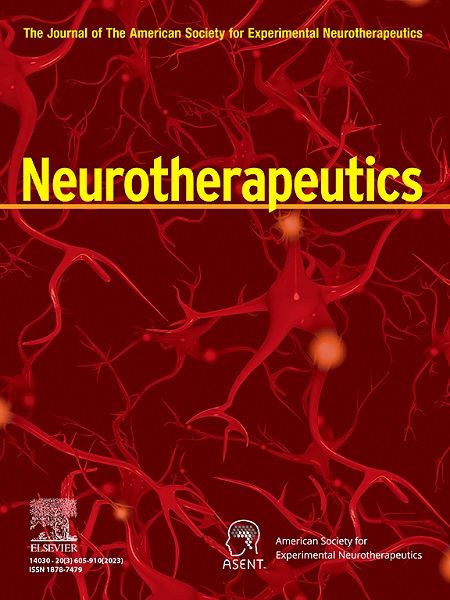Identification of plasma SEMA3E as the diagnostic biomarker for human epilepsy based on integrated bioinformatics analysis
IF 6.9
2区 医学
Q1 CLINICAL NEUROLOGY
引用次数: 0
Abstract
Despite advances in understanding epilepsy, challenges persist in identifying accessible and reliable biomarkers. In this study, an integrative analysis was conducted with transcriptomic data from both brain tissue and blood of epilepsy patients to identify common differentially expressed genes (DEGs). Using weighted gene co-expression network analysis (WGCNA), least absolute shrinkage and selection operator (LASSO) regression, and logistic regression, a robust epilepsy gene signature was constructed, and a hub gene associated with seizure frequency was identified. Single-cell RNA analysis, functional investigation, and clinical verification were subsequently conducted. Herein, we reported that the hub gene SEMA3E was significantly upregulated in both peripheral blood and epileptic brain tissue, with a positive correlation to seizure frequency. Subsequent analysis revealed that SEMA3E was enriched in excitatory neurons with NRP1 and VEGFR2, contributing to epileptogenesis by enhancing axonal growth. Clinical validation demonstrated that plasma SEMA3E levels were significantly elevated in epilepsy patients and correlated with specific clinical features. Unlike tissue biomarkers, blood-based SEMA3E exhibits advantages such as non-invasiveness and cost-effectiveness, making it suitable for large-scale screening and monitoring. This study highlights SEMA3E as a promising biomarker and therapeutic target for epilepsy, offering novel insights into its molecular and clinical relevance.
基于综合生物信息学分析的血浆SEMA3E作为人类癫痫诊断生物标志物的鉴定
尽管在了解癫痫方面取得了进展,但在确定可获得和可靠的生物标志物方面仍然存在挑战。在这项研究中,对癫痫患者脑组织和血液的转录组学数据进行了综合分析,以确定共同差异表达基因(DEGs)。利用加权基因共表达网络分析(WGCNA)、最小绝对收缩和选择算子(LASSO)回归和逻辑回归,构建了稳健的癫痫基因特征,并确定了与癫痫发作频率相关的枢纽基因。随后进行单细胞RNA分析、功能研究和临床验证。本文中,我们报道中枢基因SEMA3E在外周血和癫痫脑组织中均显著上调,且与癫痫发作频率呈正相关。随后的分析显示,SEMA3E在具有NRP1和VEGFR2的兴奋性神经元中富集,通过促进轴突生长促进癫痫发生。临床验证表明,癫痫患者血浆SEMA3E水平显著升高,且与特定临床特征相关。与组织生物标志物不同,基于血液的SEMA3E具有非侵入性和成本效益等优势,适用于大规模筛查和监测。这项研究强调了SEMA3E作为一种有前景的癫痫生物标志物和治疗靶点,为其分子和临床相关性提供了新的见解。
本文章由计算机程序翻译,如有差异,请以英文原文为准。
求助全文
约1分钟内获得全文
求助全文
来源期刊

Neurotherapeutics
医学-神经科学
CiteScore
11.00
自引率
3.50%
发文量
154
审稿时长
6-12 weeks
期刊介绍:
Neurotherapeutics® is the journal of the American Society for Experimental Neurotherapeutics (ASENT). Each issue provides critical reviews of an important topic relating to the treatment of neurological disorders written by international authorities.
The Journal also publishes original research articles in translational neuroscience including descriptions of cutting edge therapies that cross disciplinary lines and represent important contributions to neurotherapeutics for medical practitioners and other researchers in the field.
Neurotherapeutics ® delivers a multidisciplinary perspective on the frontiers of translational neuroscience, provides perspectives on current research and practice, and covers social and ethical as well as scientific issues.
 求助内容:
求助内容: 应助结果提醒方式:
应助结果提醒方式:


